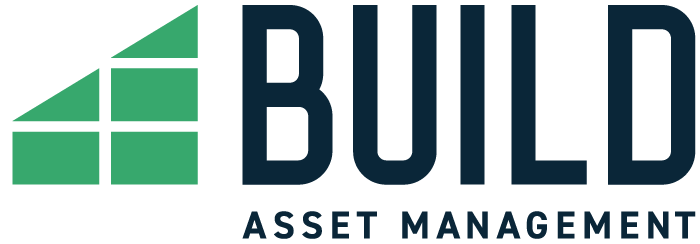Shinda Bickham and Hugh Tuomey discuss what these announcements really mean for investors.
In layman’s terms, are low rates good or bad for investors?
Shinda: It depends; low rates mean lower borrowing costs, but also mean lower yields for fixed income investors. For those investors that hold equities along-side fixed income in their portfolios, low rates could prove beneficial. Rate cuts are generally seen as a means by which to spur growth, and often help stock prices.
Hugh: I think lower rates certainly aren’t great for fixed income investors, especially those who may be retired or close to retirement and tend to rely on those investments as a source of cash flow. Since the Fed has been clear that its intention is to keep rates low, this dilemma is not going to go away. But I agree with Shinda regarding the equity market. The current environment, all other things being equal, is supportive of stocks, but can also introduce a different set of risks for those investors.
If lower rates mean lower yields, should investors be increasing their exposure to risk to achieve their investment objectives?
H: No, I don’t believe that would be prudent. In fixed income markets, that may require investors to go down in credit quality. If a typical investor was only buying investment grade bonds and they decided to take more risk, they may be forced to buy a split rated or high yield bond to make up for lower yields. Similarly, in a normal, positively sloped yield curve where yields increase the further one extends on the yield curve, an investor may be tempted to extend their maturity and duration (a bond’s price sensitivity to changes in interest rates.)This would be taking unnecessary risks in order to capture higher yields.
S: If we consider allocations outside of fixed income, then I would argue that some investors will have to take risk (in the form of equities or other risk assets) in order to meet their long-term investment objectives.
H: I do agree with Shinda with respect to looking at other asset classes. If fixed income is designed to provide stability to one’s portfolio, that’s not a place I would suggest investors take on more risk. Equity markets provide that upside, capital appreciation that helps investors grow their portfolios. The problem is that if an investment provides upside potential, it also has downside potential. The key then is to make certain there is a way to manage the risks to allow investors to have the stability of fixed income, with the ability to have exposure to just that upside equity exposure.
What if increasing risk is too, well…risky?
S: I do think that some investors will have to re-examine their risk appetites vs. risk budgets and decide their comfort level. For investors shifting some of their risk budget away from fixed income and into equities, high quality, dividend paying stocks may prove a good alternative.
H: It will also depend on where investors are on their investment horizon. If one is just beginning their career and just starting to invest, their risk profile is going to look much different than someone about to retire or has retired. The latter is where taking on more risk may not be wise. The launch of Indexed Risk ControlTM is offering investors various levels of risk mitigation within their strategies.
How does Indexed Risk ControlTM work?
H: Indexed Risk Control is designed to provide a smoother, more consistent path of returns for investors than traditional stock and bond allocation funds. The strategy accomplishes this by focusing on downside protection. By holding an actively managed, high quality core fixed income portfolio, one aims to receive a steady rate of return and downside risk protection. The strategy also holds long-only call options on the equity market to allow for potential capital appreciation. The long calls provide a downside buffer while seeking limited amount of loss (the premium paid for buying the call.) The combination of these investments, steady returns from fixed income and potential upside capture from long equity call options, provide a smooth return path with a limited risk profile.
S: Hugh is right. One of the things that make the Build Indexed Risk ControlTM strategies unique is that they are built with the two-fold objective of downside protection and upside participation. This means that the strategies are designed to limit drawdowns against dramatic downturns, but also to gain in value via the options overlay when risk markets appreciate.
H: The strategies can be modified to suit a particular investor’s level of risk. So, thinking about the investment timeline, a younger person may want to take on upside equity market exposure. In this instance, an allocation to the Aggressive Indexed Risk ControlTM strategy makes sense. A retiree may prefer the Conservative Indexed Risk ControlTM strategy. And a person who lands in between those investors may want the Moderate Indexed Risk ControlTM offering. The benefit of these options is they all have the downside protection with upside participation that Shinda mentioned.
Doesn’t downside protection = no upside potential?
S: That’s a good question. The short answer is it depends on how the strategy is designed. With most strategies you may sacrifice one for the other, but Indexed Risk Control is designed to achieve both objectives relative to the selected strategy.
H: This is what makes Build’s strategies so unique. In the actively managed fixed income portion of the portfolio, downside is sought through a high credit quality and low duration, yet you still harvest the income generated from the bonds. At the same time, the passive-like, algorithmically driven equity option allocation is a long-call only portfolio which allows for upside equity market participation.
How is it actually performing with low rates and a volatile market?
H: Nothing like an economic shutdown because of a global pandemic to test your investment thesis! During the height of the COVID-19 crisis and the subsequent economic lockdown, the S&P 500 plunged, sustaining a maximum drawdown of 33.92%. By contrast, Build’s Conservative Composite had a maximum drawdown of 6.24%, with roughly half of the performance coming from fixed income and half from equity exposure. This is an example of how the strategy seeks to deliver downside protection in even the most severe circumstances. Similarly, during the month of September, the S&P had a peak to trough of -9.6%, while Build’s Conservative Composite had a peak to trough range of -4.8%.
S: Basically, it’s performing as designed. The strategy protected principal as equity markets sold off in mid-February of this year and appreciated with equity markets as investors moved back into risk assets during the second quarter.
H: I think it’s important to point out the extreme level of volatility we’ve experienced this year. The VIX Index, the so-called “fear index”, reached its most extreme level in the history of the index this March. This is precisely the type of market Build’s strategies are designed to mitigate. Looking back over this year, we can say that the strategies provided investors with a smoother ride than many other investments.
What should investors know moving forward? What do you think the next few years of the Federal Reserve looks like?
S: It’s difficult to say what the future holds, but investors should look for opportunities that protect them in down markets while at the same time allow them to participate in the upside when markets appreciate. This is precisely what the Build Index Risk Control strategies were designed to do.
H: What Build is trying to deliver is a solution that allows investors an ability to match their downside risk tolerance with strategies that are potentially more tailored to their needs to protect without missing out if, and when, markets rise. We recommend one consider their timeline when choosing their preferred Indexed Risk Control strategy.
Foot Notes
Before joining Build, Hugh most recently held in the role of Client Portfolio Manager at Mellon, a subsidiary of BNY Mellon Investment Management. He has over 25 year of experience, working at a number of firms focusing on fixed income markets including Scotiabank, J.P. Morgan, Deutsche Bank and Goldman Sachs. Hugh holds a B.A. from Fairfield University and a J.D. from Loyola University Chicago.
Shinda previously held a position as Head of Capital Markets and Treasury for a FinTech micro lender in San Francisco, and before that spent 10 years at BlackRock in various capacities across their London, New York and San Francisco offices, most recently as Head of Portfolio Management for their systematic fund suite within the Factor Based Strategies Group in SF.


